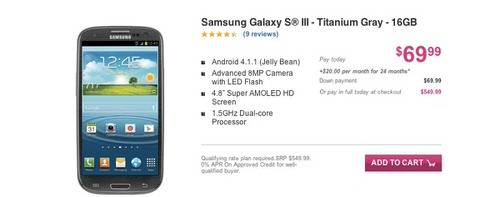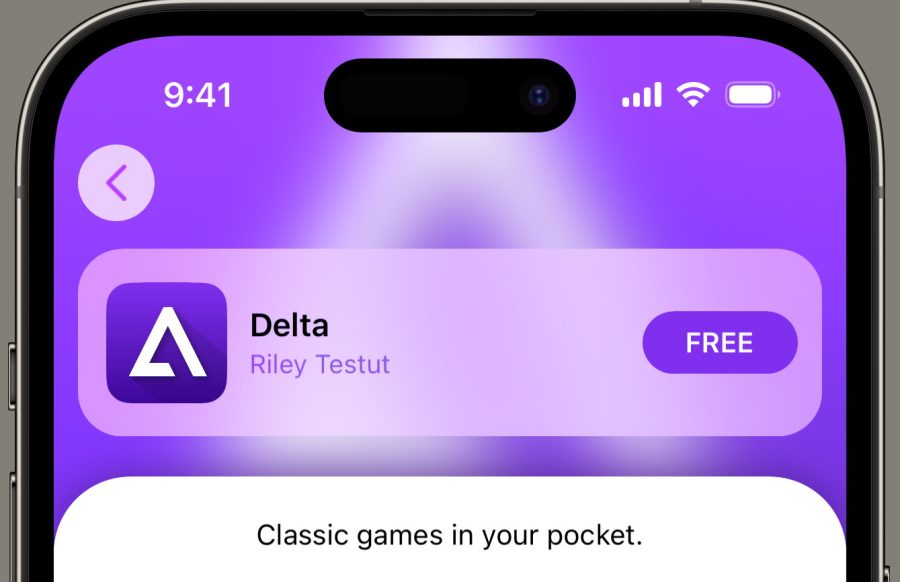
In the United States, the smartphone contract is king. T-Mobile, the smallest of the major American wireless carriers, wants to end the reign of two-year contracts, phone subsidies and early termination fees. It even argues it can save you money in the process.
Well, at least part of that is true.
T-Mobile is instituting its plan to kill the subsidy-and-contract model for U.S. smartphone buyers. Instead of paying one lump sum for a smartphone and 24 months worth of contract, consumers can pay a minimal upfront cost of a smartphone and then a monthly fee as part of their bill.
For instance, if you want to buy a Samsung Galaxy S3 with 16GB of storage from T-Mobile, you can pay $69.99 up front and then $20 a month on top of your phone bill for 24 months. If buyers prefer, they can pay the full amount of the phone up front and skip the monthly installments.
T-Mobile’s wireless plans start at $50 for one line and 500 MB of data. Users get 2GB of data for $60 and unlimited data for $70. Add the monthly smartphone fee into the equation and users are still going to get cellphone bills between $70-$100 on a monthly basis.
How The Numbers Break Down
On one hand, consumers will be happy with the fact that they are not on a contract. Ostensibly, that means they can leave whenever they want. But that still have to have to pay for the smartphone they bought. One way or another, users are going to pay for the entire unsubsidized portion of your new smartphone.
For instance, if you choose to get a Samsung Galaxy S3, you are going to eventually pay $550 for the phone. You pay $70 up front plus the $20 fee per a month. If you get the get the unlimited data plan at $70 a month, your total cost is $2,230 for the life of the phone. If you look at the fine print in T-Mobile’s contract, it will start throttling users back to “2G” speed after 5GB of data use. If you go with the bottom-tier plan at 500MB of data, the total cost of ownership is $1,750. The most popular tiered plan will likely be the $60/month for 2GB of data. That will run you a total $1,990.
For a comparison, the averages users consume about 2.3 GB of data per month. That includes moderate to heavy usage without playing an excessive amount of videos or using your smartphone as a hotspot (which usually requires a separate charge from the carriers).
T-Mobile does have cheaper phones available. The Windows Phone 8X from HTC costs $0 at checkout and $18 a month for a total of $432. A Nexus 4 will cost you a down payment of $49.99 and $17 a month for a total of $457.00.

Let’s compare T-Mobile to AT&T, which uses the “traditional” subsidy model. If we go with the baseline plan for AT&T, we are paying $40 for 450 minutes of voice time and unlimited texts (an unlimited voice plan will go for $70). Then you add in a data plan tier and messaging. The most popular is 3GB for $30 and $20 for unlimited texts. That is $90 a month, or $2,160 over a 24-month contract. Now, assume that you paid for a $200 subsidized iPhone or brand-new Android. That shakes out to $2,360. So, the difference between the most comparable plans on AT&T and T-Mobile are about $100 in favor of T-Mobile. Good, but not exactly earth shattering.
So, if we look at the baseline plan plus cost of device between AT&T and T-Mobile, you actually pay less on a contract with Ma Bell than you do with Big Pink over 24 months. Depending on the smartphone you buy, you can end up paying more per month and over a 24-month period with T-Mobile.
Does that contract really look so bad now?
T-Mobile’s Motivations
If you ever listen to a quarterly earnings call from the executives at AT&T or Verizon, they often lament the damage to their bottom line that smartphone subsidies do to them. You may pay $199.99 for a new Samsung Galaxy device from Verizon but the carrier is paying the full $550. That is millions of dollars in upfront costs that the carriers absorb.
The iPhone is especially cumbersome on carriers’ bottom lines and the more smartphones the carriers sell, the worse for wear their quarterly earnings are. AT&T, Verizon and Sprint (and yes, T-Mobile) make up the money through the life of a contract. If a user wants out of that contract, they have to pay an early termination fee.
T-Mobile is doing away with the subsidy by passing on the cost of the phone directly to the consumer. You may not be on a contract, per se, but you are still going to pay a termination fee (the remaining cost of the device plus any other T-Mobile fees) if you want to leave.
T-Mobile will also allow users to bring their own smartphones with them. So, if you have an unlocked iPhone from AT&T, all you need to do is get a $10 T-Mobile SIM card and activate it on T-Mobile. That way T-Mobile doesn’t have to deal with the smartphone manufacturer at all and can just make money providing data. Too bad it is currently illegal to unlock your cellphone.
The aim for T-Mobile is to take over the bottom of the smartphone market in the U.S. Users that do not need a lot of data and want a very cheap phone can do very well on T-Mobile’s plan. If you want an older phone, like the Samsung Galaxy Exhibit, you will pay $240 for the phone and $1,200 for 500MB of data a month over 24 months. Unless you want to get a straight pre-paid plan from the likes of Cricket, that is about as cheap as it gets among the four major carriers.
The fact of the matter is that, one way or another, you are going to pay both the carrier and the smartphone manufacturer. There is really no way around it. The wireless carriers in the U.S. will always try to convince you that their service is better, faster, cheaper. The fact of the matter is that you will pay nearly the same (within a couple hundred dollars) no matter which carrier you choose.
If you want a new, top-end smartphone, you are likely better off with the two-year contract from one of the larger carriers.
Update: Article updated to reflect $20 text messaging per month charge from AT&T.









